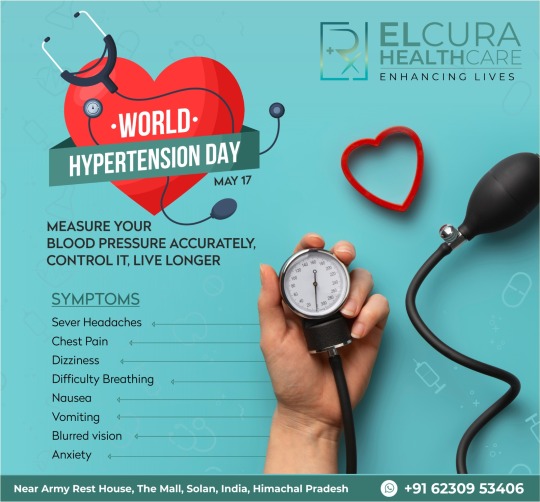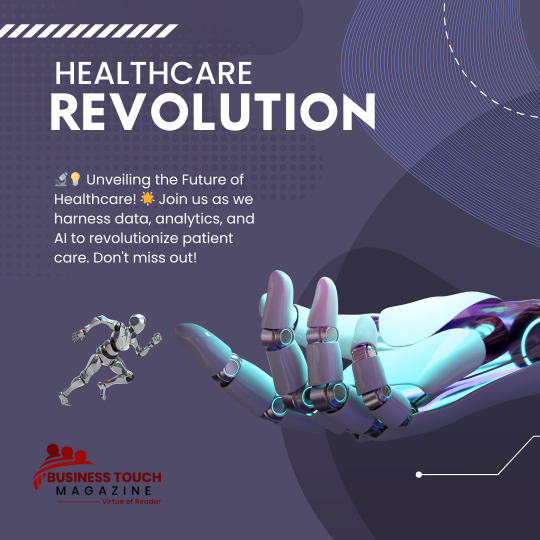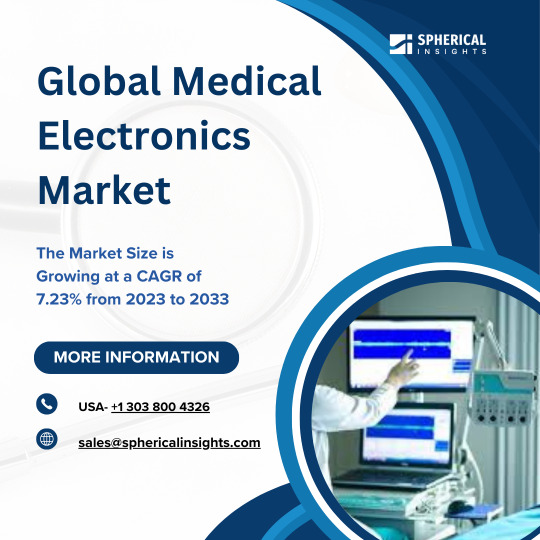#InnovationInHealthcare
Text
Transforming Wound Care: Dr. Lakshmi's Breakthrough with Synerheal Seeskin P Collagen Dressings
🌟 Discover the future of wound healing! Dr. Lakshmi’s latest case study unveils the incredible benefits of Synerheal Seeskin P, a collagen-based dressing that’s revolutionizing care
✅ Faster Healing: Experience the power of bioengineered Type II collagen!
✅ Infection Protection: Chitosan's natural properties keep infections at bay.
✅ Patient Approved: Comfort and ease in every use.
Visit Our Website: Explore our range of products at https://synerheal.com
Contact Us: Reach out today for more information: +91 8925941222, +91 9840850075
#WoundCare#InnovationInHealthcare#DrLakshmi#SeeskinP#CollagenPower#HealingUlcers#Synerheal#MedicalBreakthrough#PatientCare#HealthTech
0 notes
Text

Make sure you get your BP checked frequently & follow the doctor’s instructions. Book an Appointment Today! ☎️: 062309 53406 📍Location: Near Army Rest house, The Mall, Solan, India, Himachal Pradesh
#elcurahealthcare#healthcareinnovation#besthospitalinsolan#advancedlasersurgeries#innovationinhealthcare
0 notes
Link
I am thrilled to share with you an innovative treatment method that is making waves (quite literally) in the field of physical therapy - Shockwave Therapy. This non-invasive, highly effective treatment is now available right here in Vancouver at NorthWest Rehab Group (https://nwrehab.ca/shockwave-therapy/). Shockwave Therapy is a cutting-edge technology that uses high-intensity sound waves to interact with the tissues of the body. This interaction prompts an array of positive changes including reversal of chronic inflammation, stimulation of collagen production, dissolution of calcified fibroblasts, and release of pain inhibiting substances. The result? Accelerated healing and pain relief for a variety of musculoskeletal conditions. Whether you're an athlete looking to enhance your recovery or someone dealing with chronic pain seeking a solution, Shockwave Therapy could be the answer you've been searching for. It's particularly effective for conditions such as plantar fasciitis, tennis elbow, shoulder tendinitis, and many more. NorthWest Rehab Group in Vancouver is proud to offer this advanced treatment option. Their team of highly skilled and experienced therapists are dedicated to providing personalized care that targets your unique needs and goals. They believe in empowering their patients through education about their condition and treatment options, ensuring you're fully involved in your recovery journey. If you're curious about Shockwave Therapy and wondering if it's right for you, I encourage you to visit https://nwrehab.ca/shockwave-therapy/ for more information. Don't let chronic pain dictate your life. Discover the benefits of Shockwave Therapy today and take a step towards a healthier tomorrow. Remember, every journey begins with a single step. Make yours towards NorthWest Rehab Group - where healing happens.
0 notes
Text
Excited to share how we're unlocking the power of healthcare analytics to improve patient outcomes!
With advanced data analysis, we're gaining invaluable insights into patient care, treatment effectiveness, and disease management. By harnessing the wealth of information at our fingertips, we're revolutionizing healthcare delivery, one data point at a time. 💡 From personalized treatment plans to proactive interventions, analytics is driving positive change and saving lives. Join us on this journey to a healthier future!
1 note
·
View note
Text

Managing PCOS through diet can be a transformative journey, empowering you to take control of your health. Here are some tips to help you navigate this path with confidence:
Embrace Whole Foods: Focus on incorporating plenty of whole, nutrient-dense foods like fruits, vegetables, lean proteins, and whole grains into your diet. These foods provide essential vitamins, minerals, and fiber to support hormone balance and overall well-being.
Mindful Carbohydrate Consumption: Opt for complex carbohydrates with a low glycemic index to help stabilize blood sugar levels. Foods like quinoa, sweet potatoes, and legumes can help prevent spikes in insulin, a key factor in PCOS management.
#PCOSAwareness#HealthyLiving#BeharaHospital#Healthcare#MedicalCenter#HospitalCare#PatientCare#Wellness#HealthAndWellness#HealthcareServices#MedicalServices#HealthcareProfessionals#CommunityHealth#QualityCare#InnovationInHealthcare#PatientSatisfaction#MedicalExcellence#HealthcareExperience#MedicalSpecialties#AdvancedTreatments#WellnessJourney#HealthPromotion
0 notes
Text
3D Printed Medical Device Market Huge Growth in Future Scope 2024-2030 | GQ Research
The 3D Printed Medical Device market is set to witness remarkable growth, as indicated by recent market analysis conducted by GQ Research. In 2023, the global 3D Printed Medical Device market showcased a significant presence, boasting a valuation of US$ 3.14 Billion. This underscores the substantial demand for 3D Printed Medical Device technology and its widespread adoption across various industries.
Get Sample of this Report at https://gqresearch.com/request-sample/global-3d-printed-medical-device-market/

Projected Growth: Projections suggest that the 3D Printed Medical Device market will continue its upward trajectory, with a projected value of US$ 6.77 Billion by 2030. This growth is expected to be driven by technological advancements, increasing consumer demand, and expanding application areas.
Compound Annual Growth Rate (CAGR): The forecast period anticipates a Compound Annual Growth Rate (CAGR) of 16.55 %, reflecting a steady and robust growth rate for the 3D Printed Medical Device market over the coming years.
Technology Adoption: In the 3D Printed Medical Device market, technology adoption is pivotal for advancing patient care, surgical outcomes, and manufacturing efficiency. Manufacturers leverage cutting-edge 3D printing technologies such as selective laser sintering (SLS), stereolithography (SLA), and direct metal laser sintering (DMLS) to produce complex, patient-specific medical devices with precision and accuracy. Additionally, the integration of computer-aided design (CAD) and computer-aided manufacturing (CAM) software enables the customization of medical devices to match individual patient anatomy, enhancing fit and functionality. Furthermore, advancements in biocompatible materials and post-processing techniques ensure the safety and efficacy of 3D printed medical devices.
Application Diversity: The 3D Printed Medical Device market encompasses a diverse range of applications across various medical specialties, including orthopedics, cardiology, dentistry, maxillofacial surgery, and prosthetics. From patient-specific implants and surgical guides to anatomical models and dental restorations, 3D printing technology enables the production of customized devices tailored to individual patient needs. Each application segment addresses specific medical conditions and treatment modalities, offering improved clinical outcomes, reduced surgical times, and enhanced patient satisfaction.
Consumer Preferences: Consumer preferences in the 3D Printed Medical Device market are driven by factors such as product quality, safety, regulatory compliance, and affordability. Healthcare providers prioritize medical devices that meet stringent quality standards and regulatory requirements, ensuring patient safety and efficacy. Additionally, clinicians value devices that offer precise anatomical fit, optimal functionality, and ease of use during surgical procedures. Moreover, healthcare institutions seek cost-effective solutions that provide value for money in terms of improved patient outcomes and reduced healthcare costs over the long term.
Technological Advancements: Technological advancements in the 3D Printed Medical Device market focus on enhancing printing speed, resolution, and material properties to expand the range of applications and improve patient care. Innovations in printer hardware, such as multi-material printing capabilities and high-resolution printing heads, enable the production of complex, multi-functional medical devices with superior surface finish and mechanical properties. Furthermore, advancements in biocompatible materials, including resorbable polymers, titanium alloys, and bioactive ceramics, offer improved biocompatibility, osseointegration, and tissue regeneration for implanted medical devices. Additionally, the integration of advanced imaging techniques such as CT and MRI scans facilitates the creation of patient-specific medical devices with unparalleled accuracy and precision.
Market Competition: The 3D Printed Medical Device market is characterized by intense competition among medical device manufacturers, contract manufacturers, and healthcare providers, driven by factors such as product innovation, quality, pricing, and regulatory compliance. Established medical device companies leverage their expertise in research and development, regulatory affairs, and distribution networks to introduce innovative 3D printed medical devices that address unmet clinical needs and improve patient outcomes. Meanwhile, contract manufacturers and startups focus on niche applications and customization services to differentiate themselves in the market. Additionally, strategic partnerships with healthcare institutions, research centers, and regulatory agencies play a significant role in expanding market presence and gaining competitive advantage.
Environmental Considerations: Environmental considerations are increasingly important in the 3D Printed Medical Device market, with stakeholders focusing on sustainable materials, waste reduction, and energy-efficient manufacturing processes. Manufacturers are exploring eco-friendly materials such as biodegradable polymers, recycled metals, and bioactive ceramics to minimize environmental impact and promote circular economy principles. Moreover, efforts are underway to implement closed-loop recycling systems for waste generated during the 3D printing process, reducing material waste and energy consumption. Additionally, adherence to stringent environmental regulations and certifications, such as ISO 14001 and RoHS compliance, demonstrates a commitment to sustainability and responsible manufacturing practices within the medical device industry.
Top of Form
Top of FormRegional Dynamics: Different regions may exhibit varying growth rates and adoption patterns influenced by factors such as consumer preferences, technological infrastructure and regulatory frameworks.
Key players in the industry include:
Stratasys Ltd.
3D Systems Corporation
Materialise NV
Envisiontec GmbH
Eos GmbH Electro Optical Systems
Renishaw PLC
3T RPD Ltd.
Prodways Machines
Arcam AB
GE Additive.
The research report provides a comprehensive analysis of the 3D Printed Medical Device market, offering insights into current trends, market dynamics and future prospects. It explores key factors driving growth, challenges faced by the industry, and potential opportunities for market players.
For more information and to access a complimentary sample report, visit Link to Sample Report: https://gqresearch.com/request-sample/global-3d-printed-medical-device-market/
About GQ Research:
GQ Research is a company that is creating cutting edge, futuristic and informative reports in many different areas. Some of the most common areas where we generate reports are industry reports, country reports, company reports and everything in between.
Contact:
Jessica Joyal
+1 (614) 602 2897 | +919284395731
Website - https://gqresearch.com/
#3DPrintedMedicalDevices#PersonalizedHealthcare#InnovationInHealthcare#MedicalTechnology#OrthopedicImplants
0 notes
Text
Did you know LED screens are revolutionizing communication and healthcare in hospitals? 🏥✨ From guiding patients through hallways 🚶♂️🚶♀️ to delivering real-time updates on patient status 📊, these high-tech heroes are making healthcare experiences smoother and more efficient.
👉🏻 https://www.colorlight-led.tech/led-screens-for-hospitals-enhancing-healthcare-and-communication/
For your inquiries and concerns:
🌍 https://www.colorlight-led.tech/📮 [email protected]
0 notes
Text
Exploring the Botulinum Toxin Market: Insights into Growth Trends and Industry Dynamics. From cosmetic enhancements to therapeutic applications, delve into the evolving landscape of this lucrative market.
#botulinum toxin#botox#market research#market trends#healthcare industry#global market#industry analysis#innovationinhealthcare
0 notes
Text
Revolutionizing Healthcare: Harnessing Data, Analytics, and AI for Better Tomorrow
Dive into the future of healthcare as we leverage the power of data, analytics, and AI to transform patient care, optimize operations, and drive unprecedented innovation in the healthcare sector.

#HealthTechRevolution#DataDrivenHealthcare#AIinMedicine#InnovationInHealthcare#AnalyticsForHealth#FutureHealthcare
0 notes
Text

oday, on Shaheed Diwas, we honor the supreme sacrifices of Bhagat Singh, Sukhdev, and Rajguru, who laid down their lives for our freedom. Their courage and patriotism continue to inspire generations. Let's remember their legacy and work towards a just and inclusive society.
...........
Book an Appointment Today: 062309 53406
Location: Near Army Rest house, The Mall, Solan, India, Himachal Pradesh
#healthcareinnovation#elcurahealthcare#advancedlasersurgeries#medicaltechnology#bestlaparoscopicsurgeoninsolan#bestlasersurgeoninsolan#besthospitalinsolan#besturologistinsolan#innovationinhealthcare#diabetes specialist#bestpilessurgery
0 notes
Text
Biotechnology Trends in 2023 - Insights from SpendEdge
Originally Published on: SpendEdgeWhat are the most significant trends in biotechnology this year| SpendEdge?
The biotechnology industry is rapidly progressing, propelling itself into new frontiers of innovation and development. The application of biology to create novel products, methods, and organisms is reshaping healthcare and society at large. In the current landscape, breakthroughs in science are laying the foundation for highly personalized medicine and innovative approaches that leverage the immune system to combat serious diseases. SpendEdge, a leading procurement market intelligence company, outlines key trends in biotechnology for the year 2023.
#1 Personalization of Medicines
Biotechnology is entering a new era—the consumer era. In contrast to previous eras targeting doctors and insurance companies, the focus is now shifting towards individual consumers. The growing interest in the drug industry is fueled by a heightened emphasis on personalized medicines. For example, contemporary cancer treatments often employ drugs tailored to each patient, exemplifying the trend towards personalization. Understanding the human genome and biology provides opportunities for creating individualized treatments, marking a significant trend in biotechnology.
#2 Silicon Biology
The evolution of technologies and products in biotech is trending towards modular structures. Although the industry currently favors integration, there is a noticeable shift towards modularization. Silicon biology, though perceived as complex for modeling biology, holds promise. Extensive datasets combined with increased computational power may facilitate the transition to horizontal and modular structures, presenting an intriguing trend in biotechnology.
#3 Recruitment for Specialized Skill-Sets
The demand for a specialized and skilled workforce is surging in the biotech sector. This trend has sparked a recruitment boom, with professionals seeking opportunities in new biotech ventures. Anticipated movement between small biotech companies and large pharmaceutical firms is expected as individuals transition from established companies to promising new ventures.
#4 Safeguarding Quality
A discerning eye towards quality is a tangible trend in biotechnology. With a surge in funding over recent years filling the drug pipeline, there is an intensified focus on controlling early development to prevent sub-optimal products in the market. Pharma companies are anticipated to scrutinize drug offerings more closely, ensuring that only top-level drugs reach the market.
Challenges in the Biotech Industry
Regulatory Hurdles: Biotech products undergo extensive testing and regulatory scrutiny, involving intricate and time-consuming clinical trials. Evolving guidelines from regulatory agencies introduce uncertainty, necessitating companies to navigate diverse standards across regions.
High Research and Development Costs: Significant investments in research, specialized equipment, and skilled personnel pose financial challenges for biotech companies. Scientific setbacks often result in R&D investments not yielding returns, and pricing pressures on successful products can strain budgets.
Ethical and Social Concerns: Technological advancements, such as CRISPR-Cas9, prompt ethical debates about gene modification. Privacy concerns and ensuring equitable distribution of biotech innovations for universal accessibility present complex challenges for the industry.
Contact us.
0 notes
Text
#healthtech#patientexperience#innovationinhealthcare#digitalhealth#futureofmedicine#wellnessrevolution#aiinhealthcare#healthcareinnovation#intellyibot#intellylabs
0 notes
Text
Global Non-small Cell Lung Cancer Treatment Market To Reach $47.5 Bn By 2030: iDataAcumen
The report "Global Non-small Cell Lung Cancer Treatment Market - Global Forecast to 2030", is approximated to be USD 26.21 Billion in 2023, and it is projected to reach USD 47.5 Billion by 2030, at a CAGR of 8.9%.
In the realm of healthcare, few battles are as poignant and emotionally charged as the fight against Non-small Cell Lung Cancer (NSCLC). Each statistic represents a life touched by the relentless grip of this disease, each treatment option a beacon of hope amidst the darkness of uncertainty. In this blog, we delve into the market dynamics shaping the landscape of NSCLC treatment, shedding light on the innovations driving progress and the challenges that lie ahead.
The global NSCLC treatment market is witnessing a paradigm shift, fueled by groundbreaking advancements in immunotherapy, precision medicine, and targeted therapies. Immunotherapy, in particular, has emerged as a transformative force, offering patients a more effective and less toxic alternative to traditional treatments like chemotherapy. With drugs such as checkpoint inhibitors leading the charge, immunotherapy has revolutionized the way we approach NSCLC treatment, offering renewed hope to patients and their families.
Moreover, precision medicine has ushered in a new era of personalized treatment, allowing oncologists to tailor therapy plans to the unique genetic profile of each patient's cancer. Through genetic testing and molecular profiling, precision medicine not only enhances treatment efficacy but also minimizes the risk of adverse side effects, offering patients a renewed sense of control over their disease.
However, amidst the progress and promise, challenges persist. Access to cutting-edge treatments remains a concern, particularly in low- and middle-income countries where resources are limited. Additionally, the high cost of innovative therapies poses a barrier to affordability for many patients, underscoring the need for greater collaboration and innovation in healthcare delivery and financing models.
In conclusion, while the journey ahead may be fraught with challenges, the strides we've made in NSCLC treatment offer a glimmer of hope for all those affected by this devastating disease. With continued investment in research, innovation, and access, we can pave the way for a future where NSCLC is no longer a death sentence, but a battle fought and won with courage, determination, and unwavering hope.
Top Players: Eli Lilly and Company, Merck & Co., Inc., Pfizer Inc., AstraZeneca plc, F. Hoffmann-La Roche Ltd., Boehringer Ingelheim GMBH, Novartis International AG, Bristol-Myers Squibb Company, Johnson & Johnson, Amgen, Inc.
#cancerresearch#lungcancerawareness#treatmentinnovation#healthcaremarket#hopeforacure#nevergiveup#beatingcancer#fightagainstnsclc#immunotherapy#precisionmedicine#targetedtherapies#innovationinhealthcare#personalizedtreatment#genetictesting#molecularprofiling#patientempowerment#healthcareaccess#affordability#globalhealthequity#collaborativeinnovation
0 notes
Text

0 notes
Text
Unlocking Success in Healthcare Advisory Services
Pro Healthcare Advisors brings a wealth of experience and industry insight to the table. With a dedicated team of seasoned professionals, they specialize in providing strategic solutions, financial expertise, and operational excellence. Whether you're a healthcare institution, practitioner, or investor, Pro Healthcare Advisors tailors its services to meet your unique needs.

#HealthcareAdvisory#HealthcareSolutions#FinancialAdvisory#StrategicPlanning#OperationalExcellence#HealthcareIndustry#BusinessConsulting#ProHealthcareAdvisors#IndustryInsights#ClientSuccess#HealthcareInvestment#AdvisoryServices#HealthcareLeadership#InnovationInHealthcare#HealthcareStrategy#ProAdvisoryServices#BusinessSuccess#HealthcareConsultancy#ExpertOpinions#HealthcareFinance#OperationalOptimization#ClientTestimonials#NavigateHealthcare#HealthcareTrends#IndustryUpdates#EmpowerYourDecisions
1 note
·
View note
Text
Healthcare Financing: Fueling Technological Advancements in the Medical Realm 🏥💡
Hey Tumblr fam! Let's dive into a fascinating intersection of healthcare and finance: the profound impact of healthcare financing on technological advancements in the medical sector. 🌟💰
💰 Investment Powerhouse: Healthcare financing plays a pivotal role in driving innovation within the medical landscape. The availability of funds directly influences the research, development, and adoption of cutting-edge technologies that revolutionize patient care.
🔬 Research and Development: Funding streams from both public and private sources fuel groundbreaking research endeavors. From exploring new treatment modalities to enhancing diagnostic tools, these investments pave the way for scientific breakthroughs that improve health outcomes.
💻 Technological Innovations: Healthcare financing facilitates the integration of advanced technologies into clinical practice. From telemedicine platforms connecting patients with healthcare providers remotely to wearable devices monitoring vital signs in real-time, these innovations enhance accessibility, efficiency, and quality of care.
🌐 Global Impact: The impact of healthcare financing extends beyond borders, driving global collaborations and knowledge exchange. Initiatives supported by international funding bodies facilitate the dissemination of best practices and the adoption of innovative solutions worldwide, narrowing healthcare disparities and promoting health equity.
🚀 Future Outlook: As healthcare financing continues to evolve, so too will the landscape of technological advancements in healthcare. Emerging trends such as value-based care and digital health initiatives are reshaping traditional models of healthcare delivery, emphasizing the importance of leveraging technology to achieve better health outcomes at lower costs.
In essence, healthcare financing serves as a catalyst for progress, empowering the healthcare sector to embrace innovation and drive positive change. Let's continue to advocate for robust investment in healthcare to fuel the next generation of transformative technologies! 💪💉 #TechnologicalAdvancements
0 notes